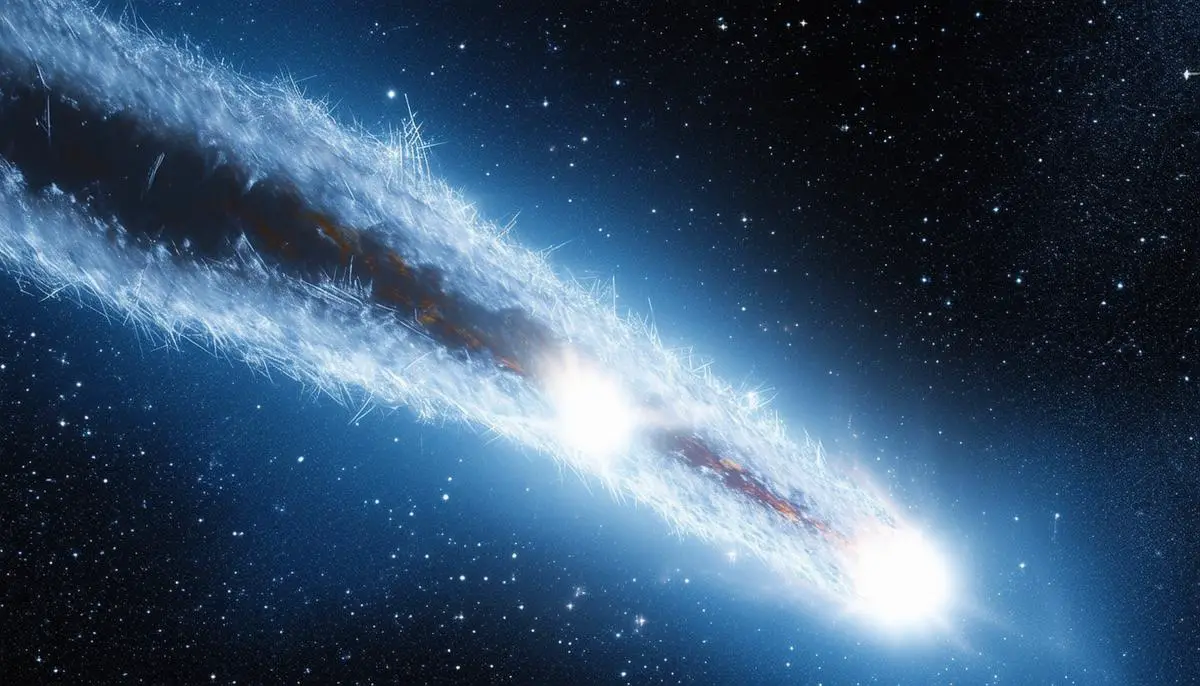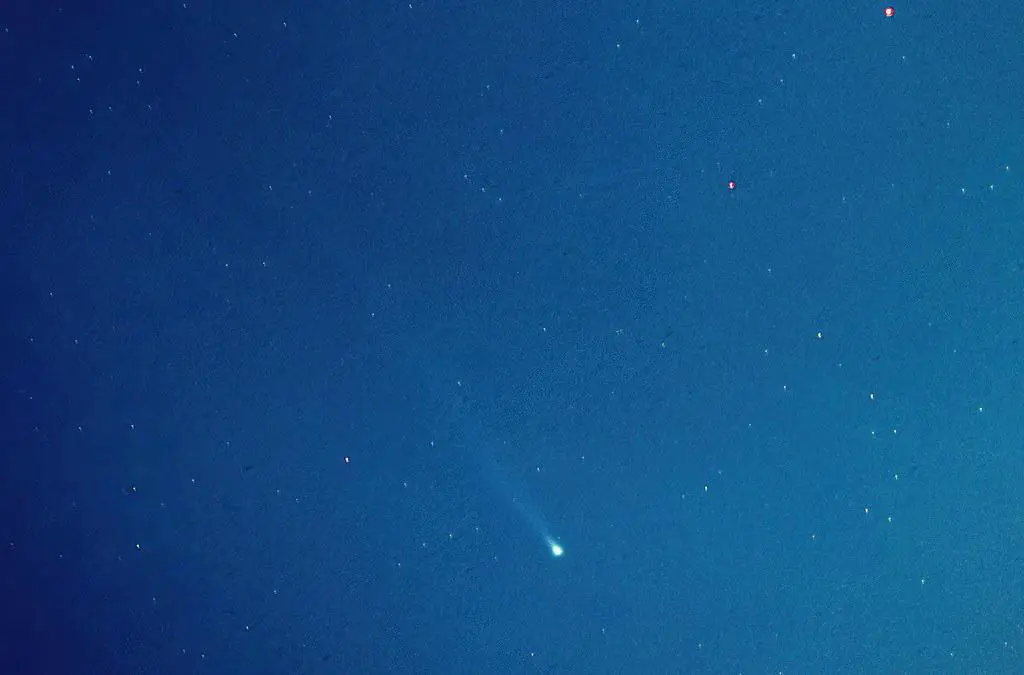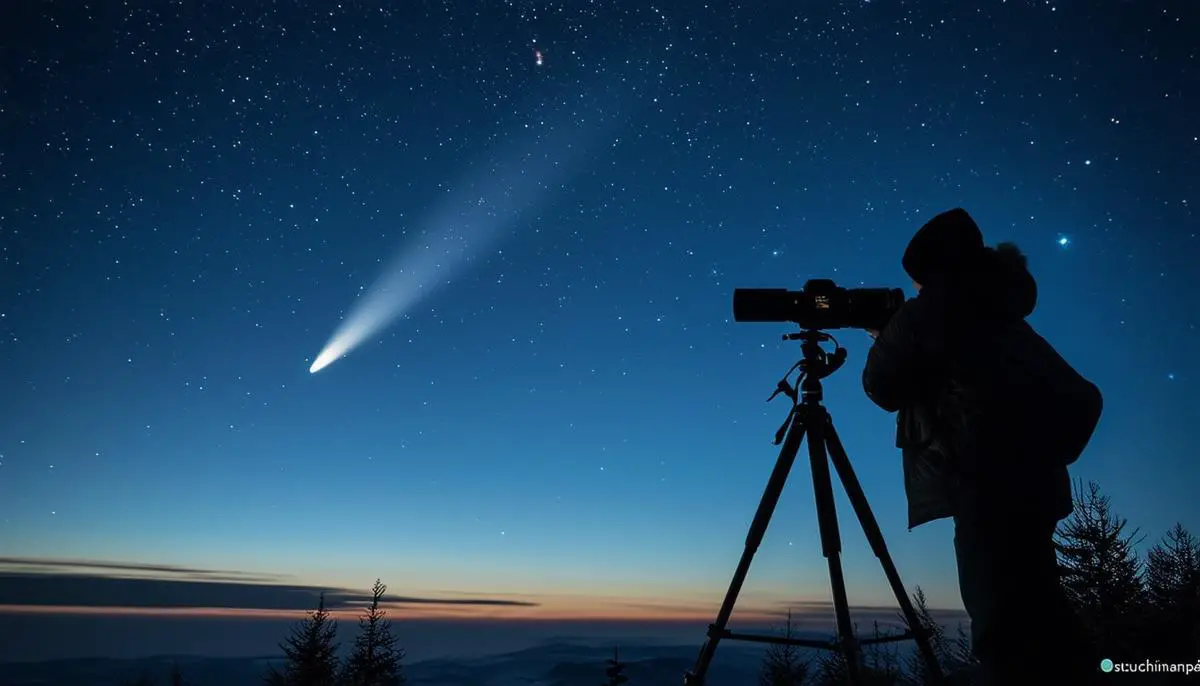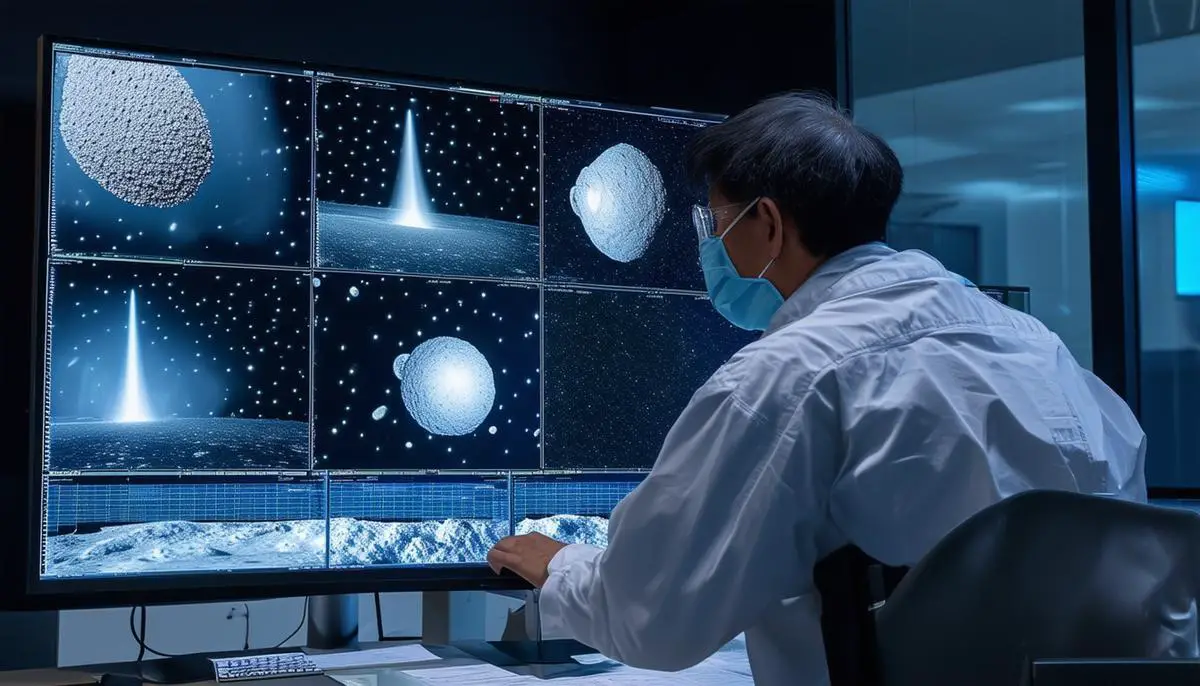Discovery and Orbit
Comet C/2023 A3, also known as Tsuchinshan-ATLAS, was first spotted in early 2023 at the Purple Mountain Observatory in China and confirmed by the ATLAS telescope in South Africa. Its orbit is retrograde, taking it backward against most planetary and cometary traffic.
The comet's perihelion distance is 0.39 astronomical units (AU), with its closest approach to the Sun occurring on September 27, 2023. On October 12, Tsuchinshan-ATLAS will pass about 44 million miles from Earth.
Originating from the distant Oort Cloud, this celestial visitor has returned to the inner solar system after an 80,000-year absence. Its passage through our solar system will be a one-time event for current observers before it embarks on another lengthy interstellar journey.
Physical Composition
Comet C/2023 A3 is composed of dust, frozen gases, and rock. Its nucleus, primarily made of water ice mixed with frozen carbon dioxide, ammonia, methane, and rocky particles, is a relic from the solar system's formation.
As the comet approaches the Sun, its icy nucleus undergoes sublimation, creating a glowing halo called a "coma." This process ejects gas and dust outward, giving the comet its characteristic fuzzy appearance from Earth.
Tsuchinshan-ATLAS showcases dual tails that can stretch millions of miles into space:
- The dust tail, resulting from solar radiation pressure, forms a curved path
- The ion tail, born from solar wind interactions, appears as a straight, elegant streak
These elements interact with sunlight in a phenomenon called "forward scattering," which can significantly boost the comet's brightness when viewed from certain angles.

Brightness and Visibility
Tsuchinshan-ATLAS's brightness is measured in stellar magnitude, with current estimates between 2 and 4. This places it among some of the night sky's most vivid luminaries. However, cometary brightness can be unpredictable and may fluctuate due to various factors.
Optimal viewing times:
- Southern Hemisphere: Around October 9-10, shortly after nightfall
- Equator to Northern Hemisphere: Around October 12-13
Areas farther from light pollution provide the best chance for viewing. The comet will be positioned predominantly in the southwest, moving between the constellations Sagittarius, Scorpio, and later Virgo.
While theoretically visible to the naked eye during brightness peaks, binoculars or a telescope are recommended for a better viewing experience. The comet's visibility serves as a reminder of the universe's capacity to inspire both seasoned astronomers and curious observers alike.

Photographing the Comet
Capturing Comet C/2023 A3 through photography requires a thoughtful combination of technical readiness and artistic vision. Key equipment includes:
- A camera proficient in low-light conditions, preferably full-frame
- A sturdy tripod for long exposures
- A fast lens with a wide aperture (low f-number)
Lens choice affects creative possibilities. Wide-angle lenses capture the comet against the panoramic sky, while telephoto options provide detailed portraits of its tails.
Long-exposure techniques can accentuate the comet's striking tail. Consider settings like ISO and aperture to balance sensitivity and overall definition.
Location is critical. Seek dark-sky reserves or remote areas with minimal light pollution and clear views of the western horizon. Start photographing just after sunset when conditions allow for 20-30 minutes of visibility.
Patience is key, as capturing the perfect comet shot may require multiple attempts due to variables like weather and comet brightness variations.

Scientific Significance
Comet C/2023 A3 offers valuable insights into the early solar system and the nature of comets. As a visitor from the Oort Cloud, it provides a glimpse into the pristine materials that formed the planets billions of years ago.
The comet's retrograde orbit allows researchers to study the forces shaping our solar system's architecture and model the distribution of cometary visits within our planetary neighborhood.
Tsuchinshan-ATLAS's survival after its close solar approach provides an opportunity to study cometary resilience and structure under extreme conditions. This data can refine theories regarding the thermal dynamics of comets when subjected to intense solar heating.
The interactions between the comet's volatile gases and solar wind serve as a natural laboratory for studying space weather phenomena. Observing the formation and evolution of its ion tail in real-time allows experts to examine how charged particles from the Sun interact with cometary environments.
These studies contribute to our understanding of:
- Planetary formation
- Celestial evolution
- Broader processes relevant to plasma physics and space weather

Comet C/2023 A3, known as Tsuchinshan-ATLAS, offers a rare opportunity to observe and study a celestial visitor from the outer reaches of our solar system. Its passage provides valuable scientific data while inspiring wonder in observers worldwide.
- Cooke W. NASA Marshall Space Flight Center. Comet Tsuchinshan-ATLAS: A Rare Celestial Spectacle. 2023.
- Paradowski ML. A New Method for Determining Cometary Characteristics Using SOHO Imaging. Astronomical Journal. 2020.
- Lovejoy T. Comet C/2023 A3 (Tsuchinshan-ATLAS) Observation Report. 2024.
- Grant S, Jones G. Comet C/2023 A3 (Tsuchinshan-ATLAS) Ion Tail Intersection with Earth. University College London and European Space Agency. 2024.
![]()